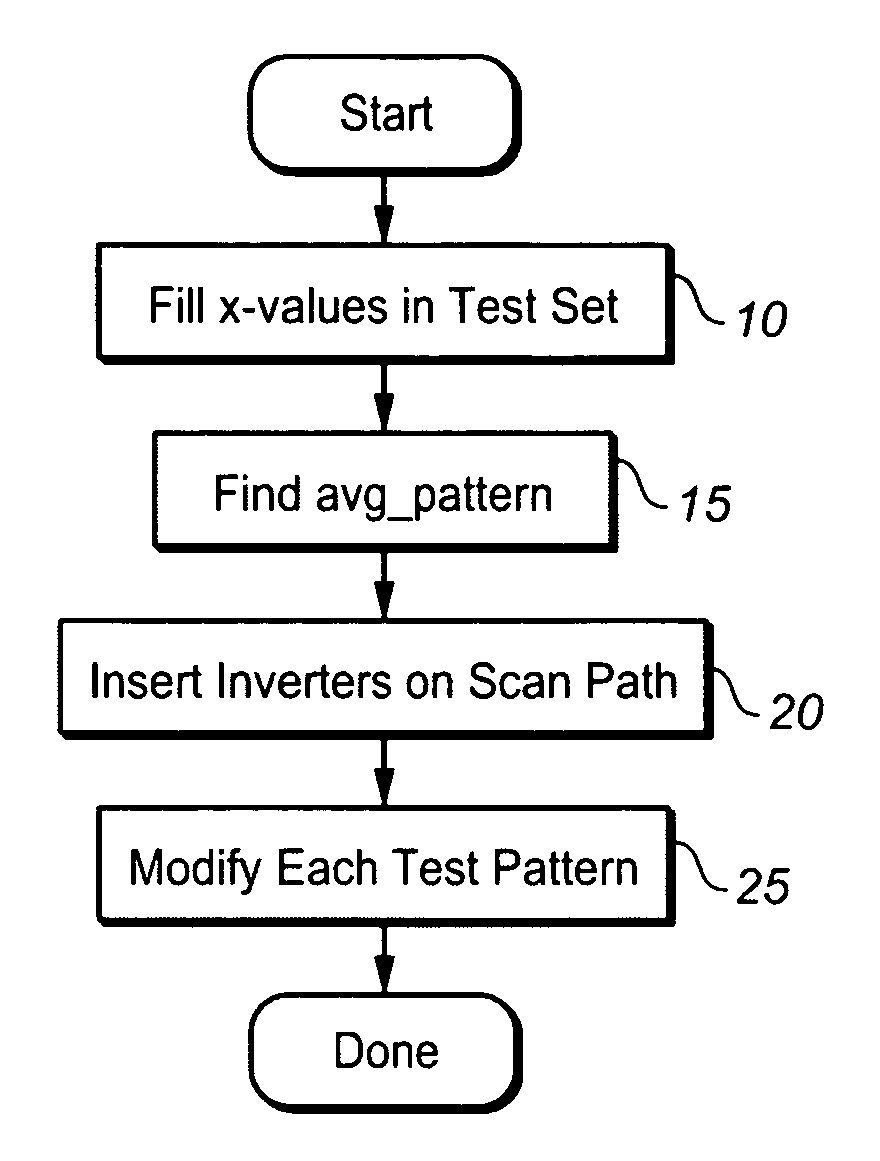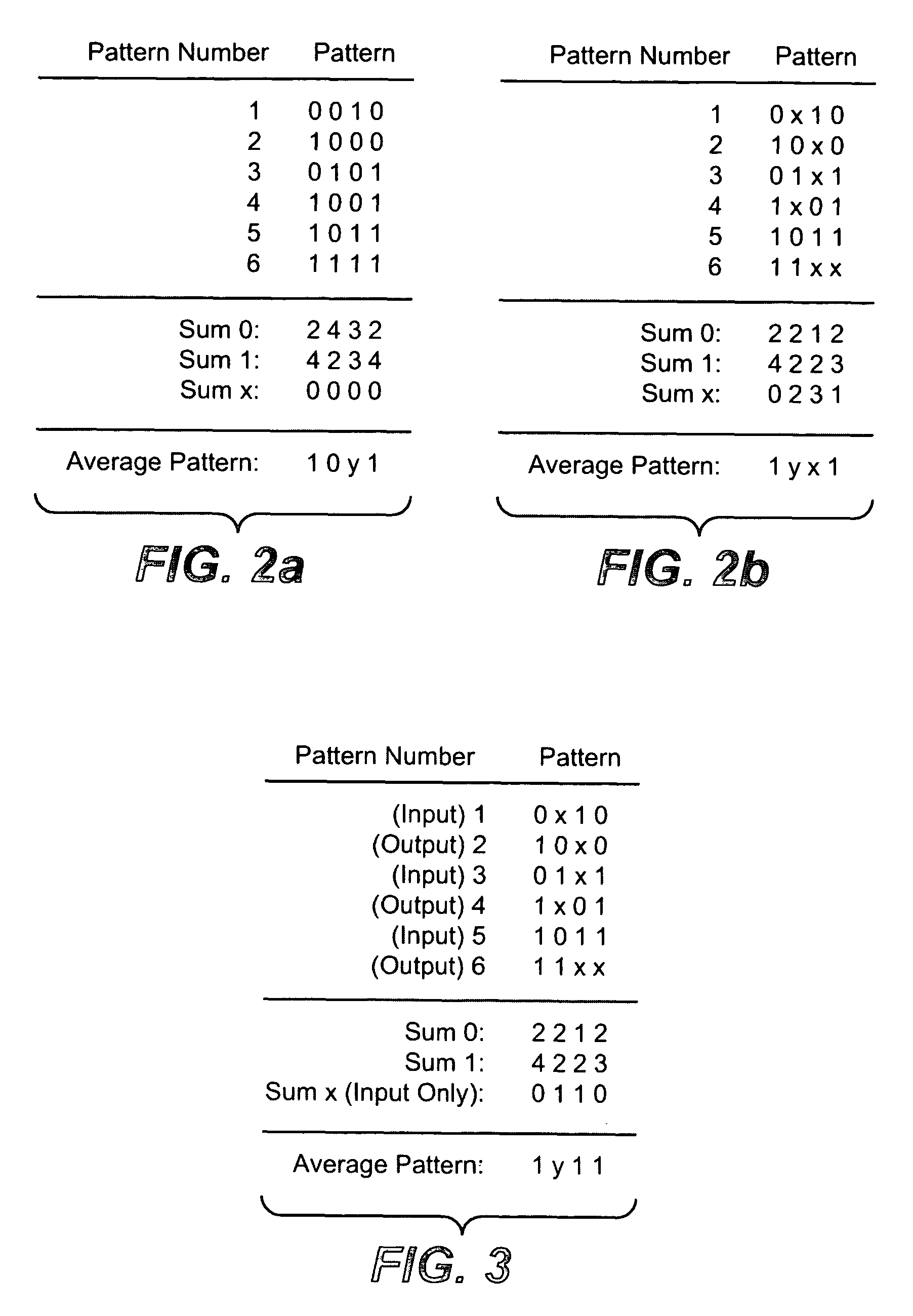Low power scan shifting with random-like test patterns
a low-power scan and random-like test technology, applied in the field of scan chain testing, can solve the problems of excess power consumption, increased temperature beyond the normal level achieved, and inherently introduced defects in some percentage of manufactured devices of microchips, etc., and achieve the effect of reducing toggling
- Summary
- Abstract
- Description
- Claims
- Application Information
AI Technical Summary
Benefits of technology
Problems solved by technology
Method used
Image
Examples
Embodiment Construction
[0033]The present invention is a method to insert logic gates on the scan paths and modify the test patterns used in these scan paths accordingly, to simultaneously reduce the amount of toggling during shifting and increase the randomness of the “don't care” bits of each test pattern, and the resulting apparatus achieved by such method when constructing and designing an integrated circuit (IC) such as an ASIC, using the methodology of logical and physical design to meet all timing and power constraints. By reducing the amount of toggling during shifting, the shift power is reduced. By increasing the randomness of the “don't care” bits within a test pattern, the collateral coverage is increased and more defective chips are detected. Reducing the amount of toggling and / or increasing the collateral coverage can be termed modifying the scan path, or scan path modification, that reduces the shift power and / or increases collateral coverage over a scan path that is designed without the ben...
PUM
 Login to View More
Login to View More Abstract
Description
Claims
Application Information
 Login to View More
Login to View More - R&D
- Intellectual Property
- Life Sciences
- Materials
- Tech Scout
- Unparalleled Data Quality
- Higher Quality Content
- 60% Fewer Hallucinations
Browse by: Latest US Patents, China's latest patents, Technical Efficacy Thesaurus, Application Domain, Technology Topic, Popular Technical Reports.
© 2025 PatSnap. All rights reserved.Legal|Privacy policy|Modern Slavery Act Transparency Statement|Sitemap|About US| Contact US: help@patsnap.com



